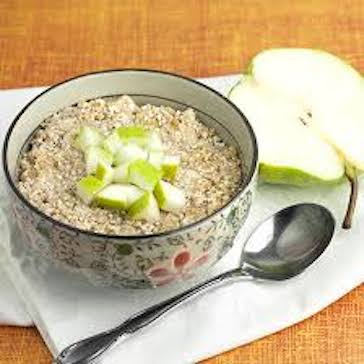
Just how many whole-grain servings do you need to stay slim? Researchers think at least three servings daily is a good goal.
That can be achieved with half a cup of oatmeal in the morning and a couple of slices of whole-grain bread for your sandwich at lunch. But not just any whole-grain bread.
Find a loaf that’s high in fibre. Researchers suspect the waist-friendly qualities of whole-grain products come, in part, from the appetite-steadying fibre found inside. Whole grains also have lots of magnesium, which is good for improving insulin sensitivity.
Here are a list of our top 5 whole-grains to blast away that tummy fat;
Quinoa
Quinoa’s high fibre content can help you feel full, which helps you stick to a low-calorie diet. The protein in quinoa will rev your metabolism and lead to more stable blood-sugar levels, reducing cravings.
Quinoa also contains handful of healthy fats and is pack full of life sustaining nutrients all across the board, including all eight essential amino acids. There are other highly beneficial compounds, vitamins and minerals in this food, such as iron, magnesium, B6 and calcium. Eating whole grains, such as quinoa, in lieu of refined grains can also help you reduce belly fat. Quinoa is also gluten-free, making it appropriate for everyone! So start your day off with a cup of cooked quinoa flakes or add some into your healthy mummy smoothie
Oats/oatmeal
Because oatmeal is a whole grain, it contains complex carbohydrates, and dietary fibre. This fibre is what your body relies on to help maintain proper digestion. Soluble fibre found in oats may also help regulate your cholesterol level and blood sugar.
Because fibre swells in your digestive tract, it also encourages satiety after a meal, this will aid in your tummy weight-loss efforts. Apart from being a complete protein, oats also contain a number of minerals and vitamins such as calcium, magnesium, phosphorous, potassium, Zinc and folate. Wow! no wonder is can be called a superfood.
Buckwheat
The versatile food is a prebiotic (a carbohydrate that prompts the growth of “friendly” bacteria in the digestive tract). The protein in buckwheat is the best known source of high biological value proteins in the plant kingdom. It contains the eight essential amino acids (eight proteins that body cannot manufacture), making it closer to being a “complete” protein. Due to the presence of inositol (carbohydrate), it is regarded as a well-balanced and low-calorie diet that helps in reducing fat accumulation and adjusts metabolism as well as lipo-soluble vitamins.
Whole-grain barley
Barley is a superhero grain for anyone wanting to lose belly fat. Not only is it low in calories, it also has the lowest Glycemic Index (GI) rating of all common grains. Low-GI carbs such as barley take a long time to digest and cause only a small, slow rise in the blood glucose and insulin levels.
In addition, low GI foods can reduce cravings — which could lead to weight loss—as they provide the body with a slow, steady supply of energy. Barley still has more! Its packed full of Vitamins and minerals such as, niacin (Vitamin B3), thiamine ( Vitamin B1), selenium, iron, magnesium, zinc, phosphorus and copper. Another bonus for this supergrain is its antioxidants content, which work to slow down the rate of oxidative damage by gathering up free radicals that form when body cells use oxygen.
Brown rice
A diet high in fibre tends to fill you up more and has been associated with decreased food intake and maintenance of a healthy body weight. Brown rice is an excellent source of dietary fibre, and also has a low glycemic index, meaning it will generally cause a more stable and long lasting rise in blood sugar levels.
This also contributes to keeping you fuller for longer and less likely to need snacks or overeat. Brown rice also contains good amounts of insoluble fibre that stays in the gut and aids digestion and excretion. This type of fibre attracts water to the gut and in this way causes more fluid bowel movements and prevents constipation. Another important point about brown rice is that is is a great source of magnesium, which is thought to be a key nutrient needed for healthy bones along with calcium and vitamin D. Magnesium also helps with cramping! Basically the more magnesium you have the less cramping you should feel around that time of the month.
So to sum up, eating a diet rich in whole grains while reducing refined carbohydrates changes the glucose and insulin response and makes it easier to mobilize fat stores! Why don’t you add some to your Healthy Mummy Smoothie and blend to get things started.
For more information on how to lose stomach fat click here
And don’t forget to join the Winter Weight Loss Challenge here to bust that belly

